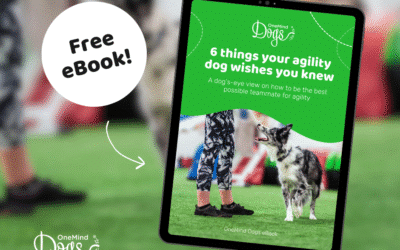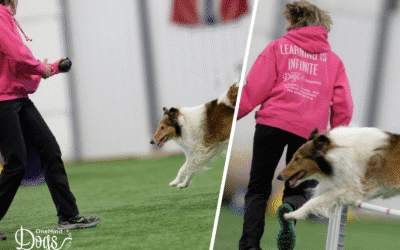Threadles and serpentines are two common patterns in dog agility that test your ability to cue your dog with precision and clarity. While they can both involve tight lines and quick turns, the way we handle them, and the way our dogs understand them, is different.
At OneMind Dogs, our method is based on how dogs naturally read human body language. Instead of relying on verbal cues, we focus on using our body language and timing to guide the dog. In this blog, we’ll break down exactly what threadles and serpentines are, how to handle them from the dog’s perspective, and how to practice them using either-or training.
What is a threadle?
A threadle is a sequence where the dog is asked to take an obstacle from the non-obvious side. Typically, the dog takes the first obstacle, then comes through a gap between the obstacles, and takes the next jump from the inside.
The key element of a threadle is that the handler must cue collection on the obstacle before the threadle line so the dog can land close to the obstacle and has a smooth line to the inside of the next obstacle. The handler must then cue a lead change for the dog to easily commit to the next obstacle.
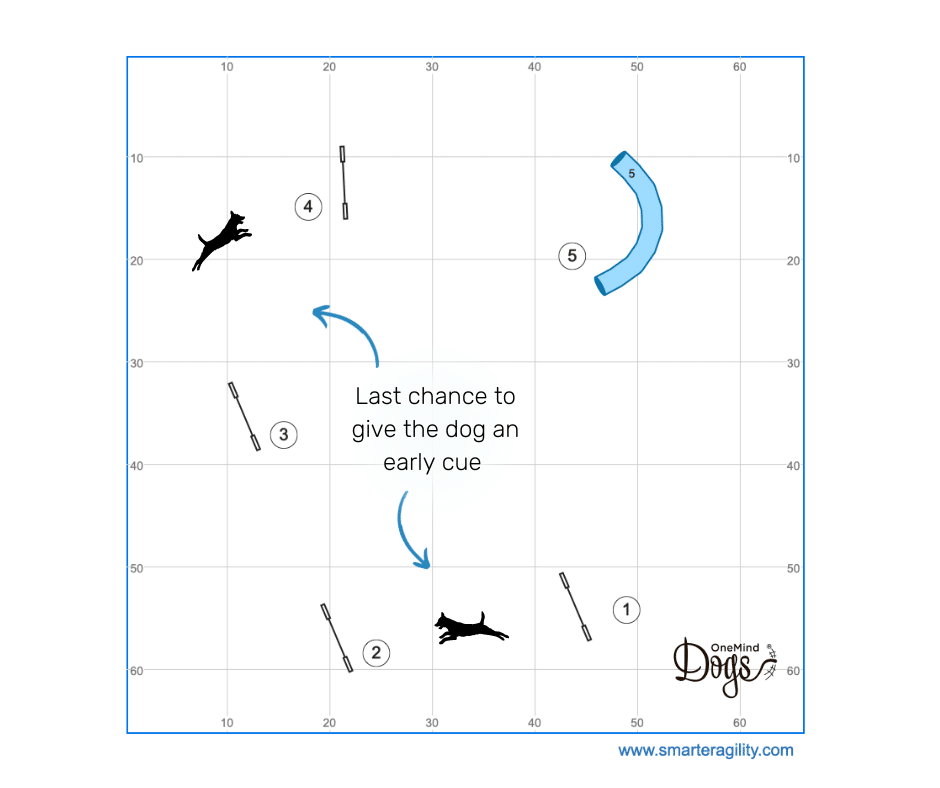
How to cue a threadle
To cue a threadle clearly, you need to:
- Connect with your dog
- Cue collection early enough for the dog to prepare to turn, at least a stride before take-off
- Watch the dog commit to coming to the inside of the next obstacle
- Cue the lead change to the next obstacle
There are different handling techniques for threadles depending on your position and your dog’s needs. In the OneMind Dogs method, some of the most common threadle tools include:
Each technique uses specific handling elements (motion, position, direction of gaze, chest direction, footwork, hands and voice) to communicate the same idea: come in toward the non-obvious side of the obstacle.
Common threadle mistakes
- Late cues: If you cue the turn too late, your dog won’t prepare in time to make the tight turn and it will feel very clunky.
- Feet and chest facing the wrong way: Your dog reads your line, if your feet or chest point toward the wrong side of the obstacle, that’s where your dog will go.
- Lack of connection: If you’re not watching your dog you’ll miss the commitment point, meaning you won’t give a timely cue.
- Inconsistent handling: If some of your handling elements are telling the dog to extend and others to collect, your dog will likely get confused and frustrated.
What is a serpentine?
A serpentine is a flowing sequence that usually involves three obstacles in a wave-like pattern. The dog has to perform several lead changes to smoothly negotiate the obstacles in order. The handler can stay on one side of the sequence or move in and out of the line of obstacles, depending on the situation.
Serpentines are all about connection, timing, and moving at a continuous speed.
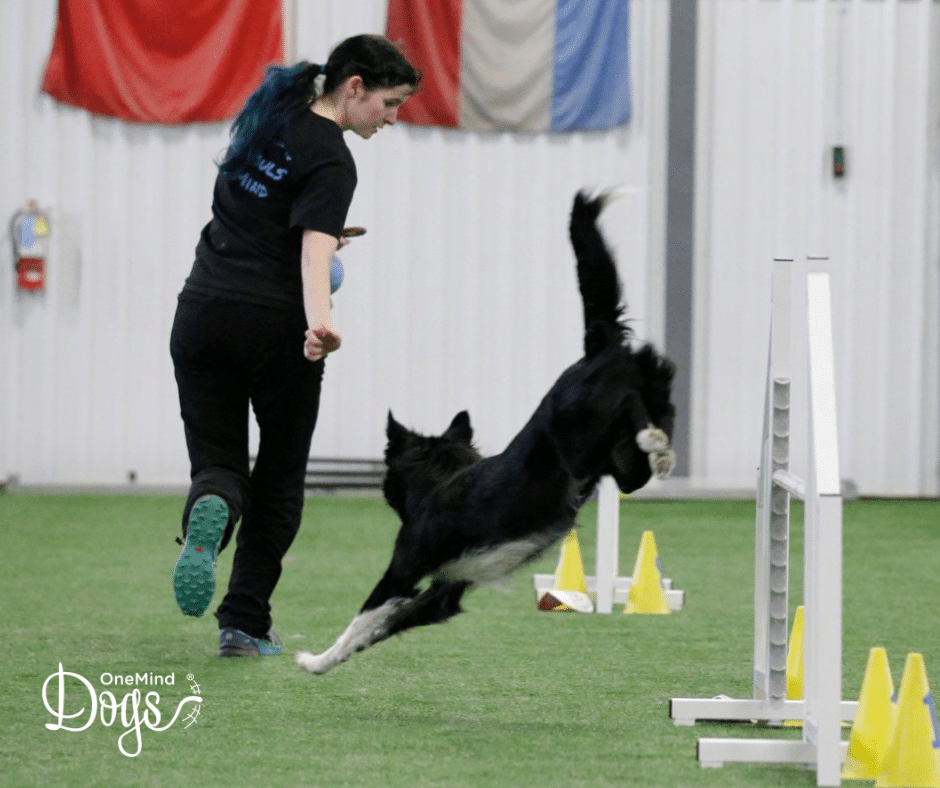
How to handle a serpentine
In the OneMind Dogs method, serpentines are handled using techniques like:
- Running on the dog’s line
- Blind crosses
- Whisky Cross (if the handler is behind)
To handle a serpentine clearly:
- Stay connected with your dog throughout
- Cue each lead change early as your dog commits to the previous obstacle
- Keep motion consistent so your dog flows through the pattern. no stopping!
Common serpentine mistakes
- Rushing ahead or falling behind: You need to move in rhythm with your dog.
- Delaying the lead change cue: If the dog lands in extension and you cue the turn too late, they’ll overshoot.
- Breaking connection mid-sequence: Losing focus means the dog may lose their line.
- Over-handling: Serpentines are about subtle guiding, not big, dramatic cues.
The importance of early information
Your dog doesn’t know whether a threadle or a serpentine is coming, unless you tell them in time. That’s why early information is crucial.
Dogs prepare to turn before they take off. If they don’t get the cue in time, they’ll land long or wide, making tight turns or pull-ins difficult or even impossible. Giving your dog early information, through your movement, connection, and position, makes these sequences smooth and rewarding for both of you.
In agility your dog is constantly reading your body to decide where to go. If your cues are clear and consistent, your dog will follow with confidence.
Why either-or training helps
One of the best ways to test your dog’s understanding of threadles and serpentines is through either-or training. This means practicing the same setup as both a threadle and a serpentine to see if your dog is truly responding to your handling, or just guessing based on what you did last time.
For example, set up the sequence below:
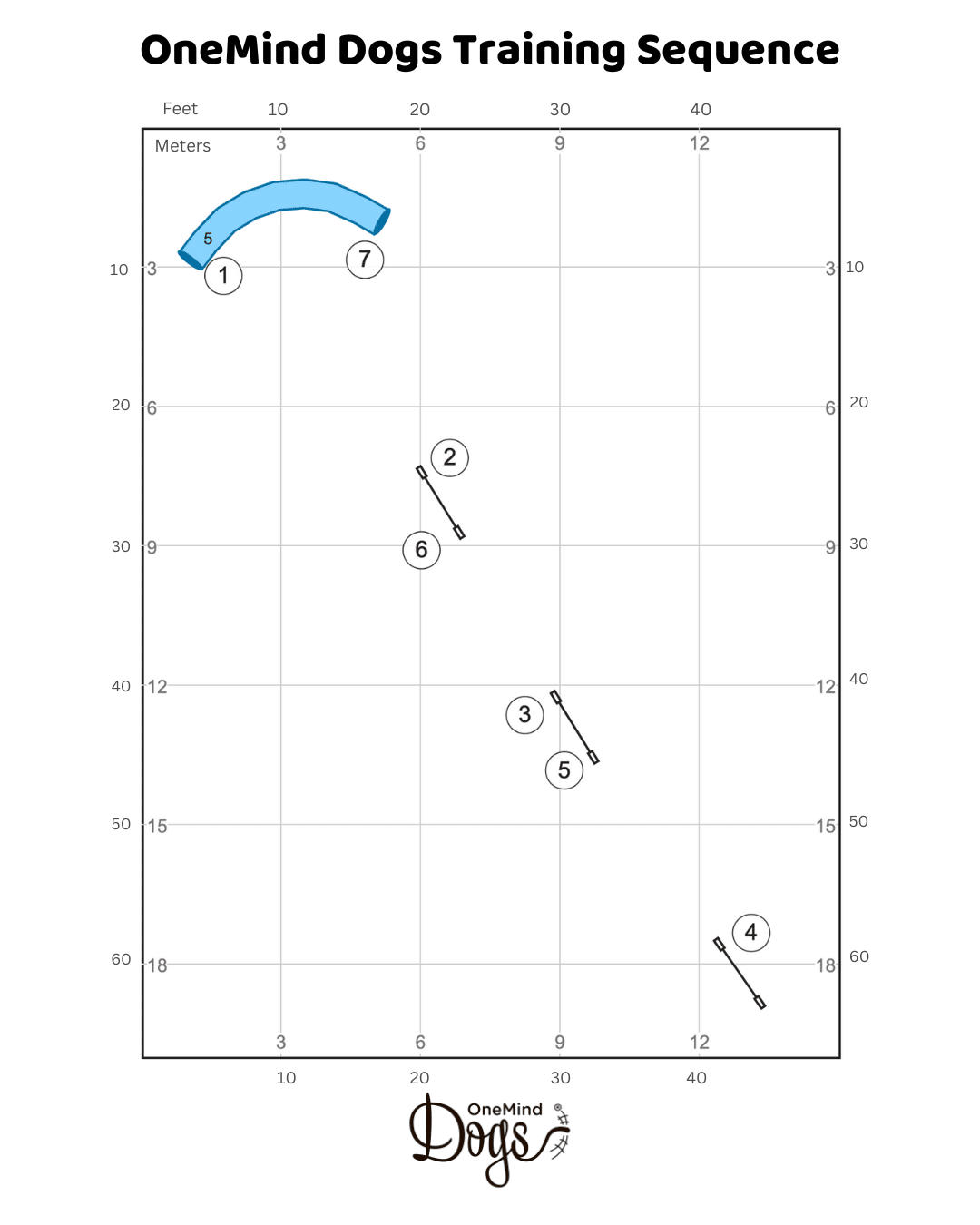
- Run 1-3 as a serpentine
- Do a Front Cross on 4
- Run 5-6 as a threadle
This teaches your dog to watch your cues and not assume the next obstacle. It also helps you recognize whether your handling is consistent and easy for your dog to follow.
A note on mistakes and mindset
At OneMind Dogs, we don’t blame the dog when something goes wrong. Mistakes are just information. If the dog takes the wrong obstacle, it means your cue wasn’t clear enough.
That’s why we always reward the dog, even if the line was off. Your dog is doing their best with the information they were given.
So if your threadles feel messy or your serpentines feel rushed, take a step back. Look at your timing, your position, your connection. You’ll be amazed at how quickly things improve when you see it from your dog’s point of view. Still need help? Contact our coaching team and send us a video of your training and we’ll give you some feedback to help you be more clear for your dog.
Want to learn more?
🎥 Watch our free webinar: Handling threadles and serpentines in agility
OneMind Dogs Instructor Lynn Madden takes you through real video examples, timing tips, and different handling techniques so you can understand what your dog needs from you.
📚 Ready to dive deeper? Check out our Threadles online course to build consistent, confident threadle handling from the ground up.

